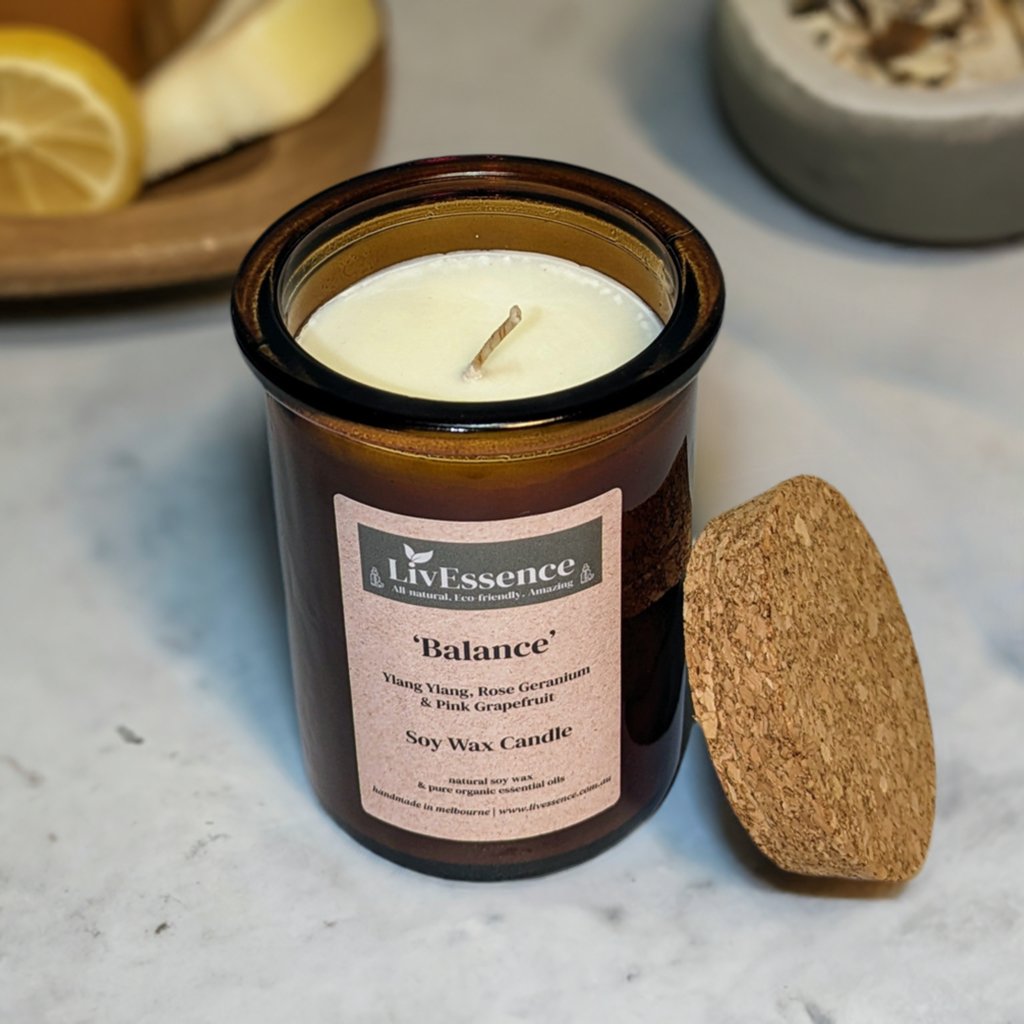Infuse Your Home with the Aroma of Crystal Soy Candles and Home Fragrance
Infuse Your Home with the Aroma of Crystal Soy Candles and Home Fragrance
Blog Article
From Wick to Wax: Comprehending the Chemistry Behind Soy Wax Candles and Their Environmental Effect
As we brighten our areas with the cozy radiance of candles, there exists a realm of complex chemistry behind the seemingly basic act of lighting a soy wax candle light. Join us as we unravel the clinical intricacies behind soy wax candle lights and discover their effects on our atmosphere.
Soy Wax Vs. Paraffin Wax
When contrasting soy wax and paraffin wax for candle light production, it is necessary to recognize the distinctive features and benefits of each product. Soy wax is an all-natural, sustainable resource originated from soybean oil, making it green and naturally degradable - soy wax candles. In contrast, paraffin wax is a result of oil refining, which raises worries about its environmental effect and sustainability
Soy wax candle lights melt cleaner and discharge much less residue contrasted to paraffin wax candle lights, making them a healthier selection for indoor air high quality. Additionally, soy wax has a lower melting point, permitting a longer-lasting candle that distributes scent more efficiently. Paraffin wax, on the other hand, has a tendency to shed faster and much less cleanly, possibly launching hazardous chemicals right into the air.
From a sustainability point of view, soy wax is preferred for its biodegradability and sustainable sourcing, aligning with the expanding consumer choice for eco conscious items. While paraffin wax has been a typical selection in candle light making due to its affordability and simplicity of usage, the shift in the direction of green alternatives like soy wax is obtaining energy in the market.
Chemical Composition of Soy Wax

Combustion Process in Soy Candles
The chemical make-up of soy wax directly influences the combustion process in soy candle lights, influencing aspects such as burn time, fragrance release, and ecological influence. When a soy candle is lit, the heat from the flame melts the wax near the wick.
The burning effectiveness of soy candle lights is affected by the purity of the soy wax and the top quality of the wick. A clean-burning soy candle light with an appropriately sized wick will lessen and produce a constant candles flame residue formation. This not just prolongs the shed time of the candle but likewise enhances the release of fragrances. Additionally, soy wax candle lights have a lower ecological influence contrasted to paraffin candle lights because of their naturally degradable and sustainable nature.

Ecological Advantages of Soy Wax

Thought about a lasting alternative to traditional paraffin wax, soy wax provides notable ecological benefits that make it a prominent selection amongst eco-conscious consumers. One considerable advantage of soy wax is its renewable sourcing. Soy wax is stemmed from soybean oil, which is primarily grown in the USA. The growing of soybeans assists support local farmers and reduces the reliance on non-renewable nonrenewable fuel sources utilized in paraffin wax manufacturing. In addition, soy wax is naturally degradable, indicating it damages down naturally without launching harmful contaminants into the environment. This particular makes soy wax candle lights a more eco-friendly alternative compared to paraffin wax candles, which are made from oil, a non-renewable source. Soy wax burns cleaner and produces less soot than paraffin wax, adding to much better interior air quality and reducing the requirement anonymous for cleansing and upkeep. Overall, the ecological benefits of soy wax straighten with the expanding demand for lasting and environmentally friendly items in the marketplace.
Recycling and Disposal Factors To Consider
Reusing and proper disposal of soy wax candles play an essential function in preserving environmental sustainability and reducing waste in neighborhoods and homes. When it pertains to recycling soy wax candle lights, the very first step is to guarantee that the candle light has shed entirely. This can be accomplished by enabling the candle light to shed up until the wick is no more useful, and after that letting the continuing to be wax cool and strengthen. As soon as the wax has actually strengthened, it can be anonymous very carefully removed from the container.

In regards to disposal, if recycling is not an option, soy wax candles are biodegradable and can be securely gotten rid of in the majority of house waste systems. It is constantly advised to examine with regional recycling facilities or waste monitoring solutions for specific standards on candle disposal to guarantee appropriate handling and environmental protection.
Verdict
In conclusion, the chemistry behind soy wax candle lights exposes their environmental benefits over paraffin wax candle lights. Soy wax, derived from soybean oil, burns cleaner and produces less residue when compared to paraffin wax.
When contrasting soy wax and paraffin wax for candle light production, it is important to recognize the unique qualities and advantages of each material (soy candles).Soy wax candles melt cleaner and send out much less residue contrasted to paraffin wax candle lights, making them a much healthier choice for indoor air high quality.Taken into consideration a lasting option to traditional paraffin wax, soy wax offers significant environmental advantages that make it a popular choice among eco-conscious customers. Soy wax burns cleaner and creates much less soot than paraffin wax, contributing to better interior air top quality and minimizing the requirement for cleaning and upkeep.In final thought, the chemistry behind soy wax candle lights discloses their ecological advantages over paraffin wax candles
Report this page